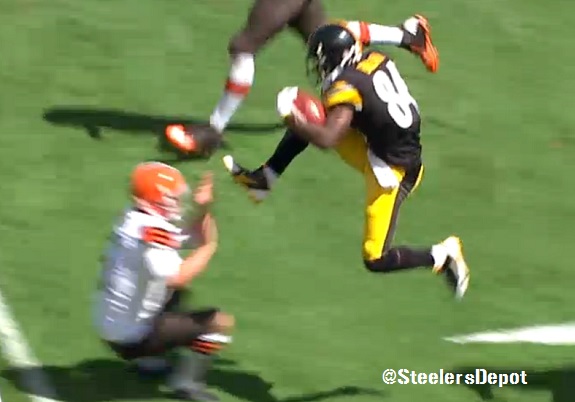By this point in the offseason, there aren’t too many stones left unturned. Some of those stones have been turned, picked up, polished, and skipped over the lake, admittedly. But some topics merit more attention than others, especially as new information is gathered, either through breaking news or further research.
Among the topics that we have discussed at length has been the inconsistency of the performance handed in by first-year punter Brad Wing in his debut with the Pittsburgh Steelers last season. Wing finished with an average of just 43.7 yards per punt by the end of the year, which ranked low across the league.
His net punting average showed an improvement not predicted by his gross punting average, and this can mostly be attributed to the strong play of the Steelers’ gunners on punt coverage, with strong contributions from the likes of Antwon Blake, Shamarko Thomas, and Ross Ventrone.
Wing’s 38.8 net average was middling in comparison to his peers, but as a product of his gross average, it’s reasonable to speculate by the data alone that outside factors played a role, and the eye test confirms the value of the gunners.
But there’s also the other side of the ball, the punt return unit. We have already discussed this offseason the need for the Steelers to get better in their efforts to block on their kick returns, as well as the need for better play from their returners themselves.
On punts, however, the Steelers have Antonio Brown, a Pro Bowl returner, who averaged 10.6 yards per return, scoring one touchdown on 30 punt returns for a total of 319 yards. As a team, Pittsburgh averaged 10 yards per 32 returns for 321 yards.
But Steelers opponents posted a gross punting average of 45.3, booming out 3078 distance yards on 68 punts. Subtract the return yardage, and you get a net total of 2757 yards, which works out to 40.5 yards per punt—nearly a full two yards better than what the Steelers managed on their own punting units. That net average would have tied for eighth-best in the league.
This is all in spite of the fact that Brown has been an above average return man. So where does the culprit lie? It’s actually a combination of factors.
Brown deserves part of the ‘blame’, so to speak, because he tends to skew toward the conservative side when it comes to fielding certain punts that might put himself in danger of injury. Quite frankly, this is something that you would want your All-Pro starting wide receiver to do.
But an even bigger concern is the rest of the return unit, particularly the jammers, who have not done nearly as well as they have as gunners. Too many times, to put it simply, the Steelers have not been in a position to make a return on punts.
Of the 68 punts that they were able to force last season, only 32 of them were returned, meaning that a full 36 punts were either downed, went for a touchback, or traveled out of bounds. The percentage of punts returned must increase this season.








